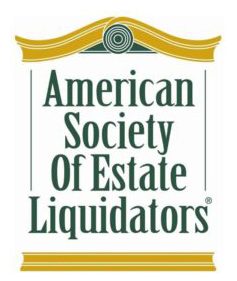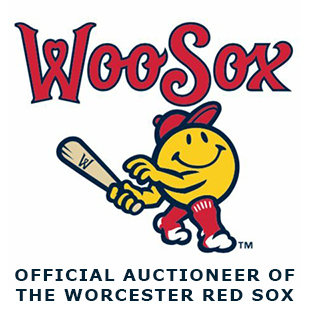Have you inherited or chanced upon Russian luxury items that might be authentic Fabergé pieces? There’s a possibility – albeit a very slight one – that you have a genuine Fabergé egg made for the Tsars, which can be worth millions. More likely is that you have one of the many other valuable, ornate, non-egg pieces produced by the House of Fabergé.
In any case, Central Mass Auctions can help authenticate what you have and bring it to auction in front of eager collectors.
“Goldsmith by Special Appointment to the Imperial Crown”
The House of Fabergé was a Russian jewelry and luxury goods company founded by Gustav Fabergé in St. Petersburg in 1842. Under his son Peter Carl Fabergé, the firm became the most prestigious luxury house in Imperial Russia in the late 19th and early 20th centuries. They held the prestigious title of “Goldsmith by special appointment to the Imperial Crown.”
“Fabergé” isn’t a generic style or technique to make exquisitely detailed eggs. It refers specifically to objects created by this Russian firm during a specific period. The company employed master craftsmen who created luxury items using techniques like guilloché enamel, precise goldsmithing, and intricate gem-setting. When the Bolsheviks seized power in 1917, the House of Fabergé closed forever. Authentic pieces are finite and exceptionally valuable.
The Famous Eggs
The House of Fabergé created 69 decorative eggs between 1885 and 1917. Of these, 50 were Imperial Easter eggs commissioned by Russian Tsars Alexander III and Nicholas II as gifts for their wives and mothers.
The location of 44 Imperial eggs are known today. While finding one of the six missing Imperial eggs would be extraordinary, it is not impossible. The 2014 discovery of an Imperial egg at a U.S. flea market, purchased by a scrap metal dealer for $13,302 and later valued at $33 million, shows these eggs can still reappear. Like all items of great value and historical significance, they do change hands sooner or later
The 19 non-Imperial eggs were created for wealthy private clients. While less elaborate, they still represent exceptional craftsmanship, and can be worth tens of thousands of dollars.
Other, non-egg Fabergé items of value
Cigarette cases were among Fabergé’s most popular items. These used the firm’s signature guilloché enamel work of engine-turned patterns under translucent colored enamel. Recent sales show authentic Fabergé cigarette cases bringing $20,000-$65,000 depending on size, condition, and decoration complexity.
Picture frames were another specialty, sometimes made for the Imperial family. These range from simple silver frames ($3,000-$8,000) to elaborate examples with enamel and gems ($15,000-$40,000).
Desk accessories including letter openers, inkwells, seals, and small clocks vary greatly in price. Desk clocks, for example, have brought $8,000-$25,000 at auction.
Jewelry and personal accessories like cufflinks, brooches, and small decorative objects were produced in large quantities. A platinum and jeweled pendant sold for $270,000 at Sotheby’s.
Hardstone animals carved from nephrite, agate, and other stones with jeweled eyes were popular Fabergé creations. These miniature sculptures of elephants, pigs, birds, and other creatures typically sell for $5,000-$25,000 depending on size and craftsmanship quality.
All values depend on authenticity, condition, provenance, and current market conditions. Professional evaluation is required to determine actual worth.
Valuable Reproductions and Inspired Pieces
Quality reproductions and inspired pieces also have auction value, though typically much less than authentic Fabergé pieces. Understanding these categories helps identify items worth including in an auction.
Victor Mayer reproductions (1989-2009) were made under official Fabergé licensing using genuine precious metals and gemstones. These limited edition pieces can be worth $2,000-$15,000, particularly larger eggs with complex enamel work and mechanical features.
Theo Fabergé pieces created by Peter Carl’s grandson (1922-2007) represent another quality category. His “St. Petersburg Collection” commonly appears in estate sales with values ranging $500-$5,000 based on size, complexity, and documentation.
Contemporary Russian decorative arts and museum reproductions can also have value, particularly pieces with heavy construction, genuine enamel work, and proper documentation.
Most tourist-quality Russian eggs have little value at auction.
Professional Evaluation
Authentication of Fabergé pieces requires specialized knowledge of hallmarks, construction techniques, enamel work, and market history. Sophisticated modern reproductions can fool casual observers, while valuable authentic pieces might look unremarkable to untrained eyes.
Additionally, provenance and documentation significantly affect value. Pieces with exhibition history, previous auction records, or connections to notable collections command premium prices. Professional evaluation can uncover this background information and authenticate both the piece and its history.
Whether you inherited a Fabergé egg of some kind or have some old Russian jewelry that’s been in your family for years, our professional evaluation helps you to be certain of what you own.
Contact Central Mass Auctions to evaluate your Fabergé piece
Contact Central Mass Auctions to get a professional evaluation of what you have. We work with clients throughout Massachusetts, New England, and beyond, running both live and online auctions to reach collectors who will go to extraordinary lengths to complete their collections.
You can call Central Mass Auctions at 508-612-6111 or email us.




